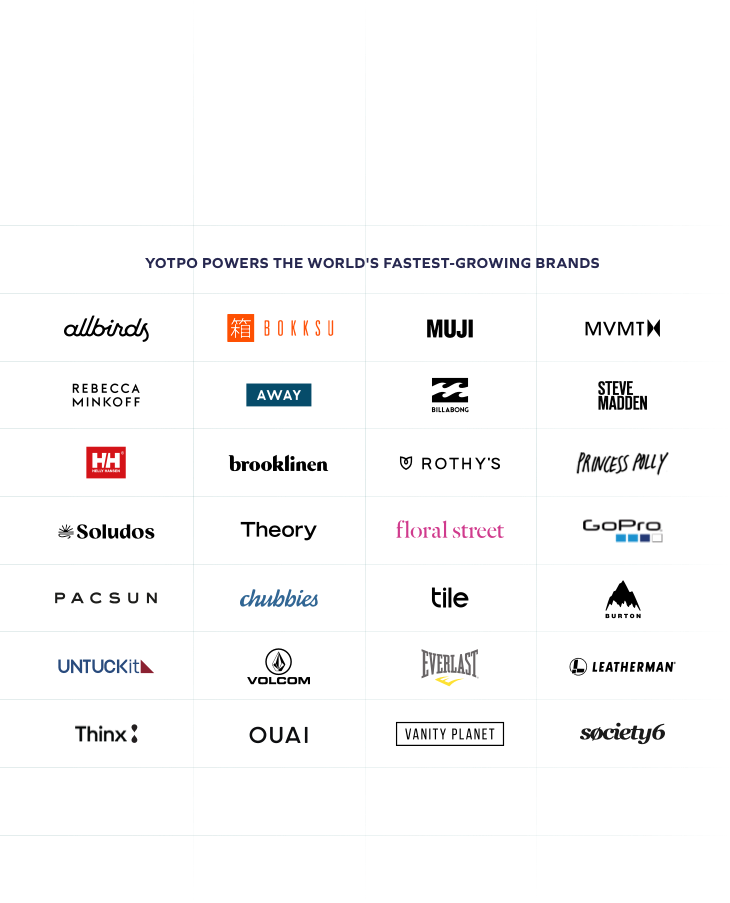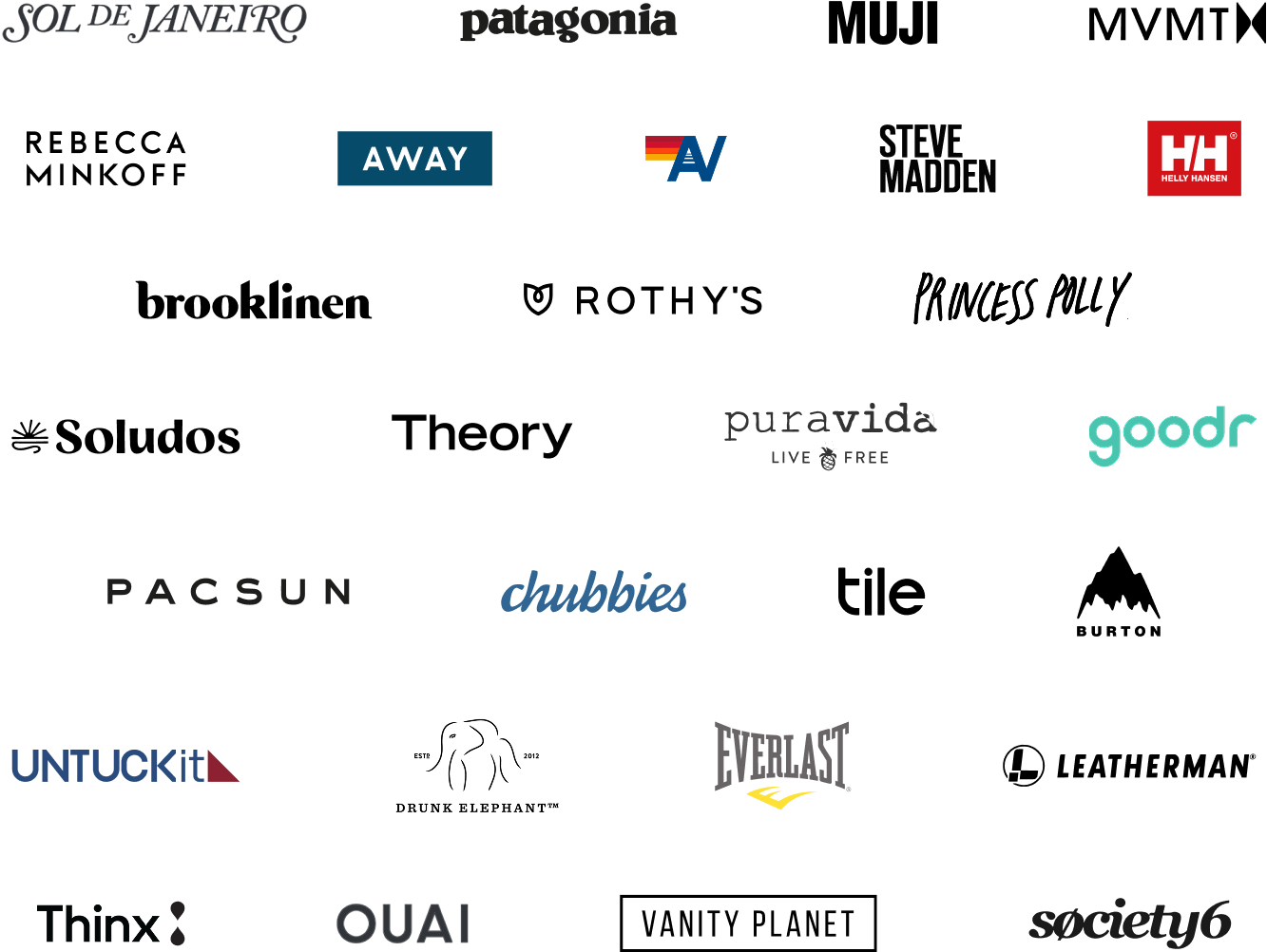With the rush of holiday shopping behind us, eCommerce brands can finally focus on getting ahead for 2019. But, as savvy customers continue to expect more from their favorite brands, it’s tough to know where to focus your efforts. Is personalization the answer? Or would you be better off opening the doors of your first brick-and-mortar location?
Our Customer Success Team works with the leading direct-to-consumer brands around the world. Through their work optimizing and strategizing for their eCommerce success, they’ve put together an insider list on the key focus areas for this year. Whether you’re selling the perfect pair of jeans, the new must have moisturizer, or premium bedsheets, we’ve got you covered with the most important trends for the new year, by vertical.
Fashion industry trends for 2019

Katie McKeever is an Enterprise Customer Success Manager and the Fashion Vertical Lead, working with brands like UNTUCKit, Steve Madden, and Billabong. This is her trend forecast:
Fit emerged as hands-down the biggest issue for fashion brands over the last year, primarily because of its correlation to returns. Shoppers return between 15% and 40% of online purchases, as compared to 5-10% of what they buy in stores.
The fashion industry bears the brunt of the return problem, hovering around a 30-40% return rate, in large part because customers can’t figure out the correct size to purchase. This problem is made worse when brands make fabric or manufacturing changes, making fit less predictable even for loyal customers.
To combat the fit fiasco, smart brands are turning their attention to creating comprehensive size guides and fit scales by product, rather than for the brand as a whole. In addition, they’re asking customers to rate fit on a sliding scale as part of their email review requests. This ensures that customers on a product page get both the valuable individual customer insight on fit within the reviews, as well as an overall understanding of how a product fits (i.e. small, true to size, or large).
As brick-and-mortar stores and pop-ups become the standard for leading direct-to-consumer brands, ensuring a consistent experience across channels is critical. For brands with loyalty and referral programs, this means having a unified customer experience for earning and redeeming points both in-store and online.
Online-first brands who’ve invested in creating standout retail experiences, like Millennial favorite Chubbies, have learned that in-store growth creates new opportunities to acquire relevant shoppers, who will come back to make future purchases online. Ensuring that their experience in-store matches the one on your website is paramount to maintaining customer satisfaction and earning those repeat purchases.
And finally, investing in brick-and-mortar stores gives brands another way to reduce fit-related returns. Customers who’ve had a chance to try on clothes in a fitting room can order confidently online.
Beauty industry trends for 2019

Amanda Griman is an Enterprise Customer Success Manager and the Beauty & Cosmetics Vertical Lead, working with brands like Murad, Moroccanoil, and Moon Juice. This is her trend forecast:
Beauty products are as personal as it gets, and customers want to know that they’re getting the right items for their specific needs. The best way to do this online is to allow them to connect with and see other people like themselves using your products.
Adding custom questions to email review requests around topics like age and skin type will allow shoppers to sort through reviews based on what worked for people with similar characteristics. It also replicates the in-store experience of telling a sales associate what your needs and concerns are before they help determine if a product is right for you.
Beauty and wellness shoppers constantly seek out content on how to use products to achieve particular results. This gives brands the unique opportunity to build communities by creating and/or sharing video tutorials, whether by working with influencers or asking customers to submit videos along with their reviews. For beauty brands, 2019 will be all about using educational and inspirational content to foster meaningful connections with their customers and among them.
From delightful, content-rich online experiences, to super Instagrammable pop-ups and stores, beauty brands need to understand who their customers are and what they’re looking for across channels.
The brands that will come out on top this year are the ones that have solutions in place to aggregate consumer data across channels — from purchases made in-store and online to browsing habits, reviews written, social engagement stats, and more. The more you can meet your customers wherever theyare and serve up the content and products they want to see, the greater a connection they’ll feel for your brand.
Home & electronics industry trends for 2019

Ryan Cantor is an Enterprise Customer Success Manager and the Home & Electronics Vertical Lead, working with brands like Bob’s Discount Furniture, American Furniture Warehouse, and Leesa Sleep. This is his trend forecast:
As housing prices continue to rise and Millennials struggle with student debt while building their careers, homeownership is becoming less of a priority, and more people are renting. The costs of buying and owning a home went up 14% over the course of 2018, while rent costs went up just four percent.
Renters look for more affordable, smaller, and modular furniture options to accommodate smaller living spaces and frequent moves. For product teams at homeware companies, this means designing with the renter in mind, rather than with the traditional goal of furniture that will last a lifetime.
Due to the cost and size of home and electronics products, many shoppers prefer to purchase in person. However, 2019 is already signalling major growth for online sales. This means furniture brands have the opportunity to cut down on showroom inventory and to better match supply with demand.
Saving costs on excess inventory will also provide brands with the budget to invest in on-site technology that improves shopper confidence, such as VR tools that allow shoppers to see what items would look like in their own homes, 360-degree images, customer photos, and customization modules.
More so than in other verticals, customers in the home and electronics sector put more time and consideration into their purchase decisions. This is because furniture and homeware tends to be more expensive and will typically be used on a daily basis. One furniture brand shared that the purchase cycle for their products is about 80 days.
To get ahead of indecisive shoppers and heavy competition, home and electronics brands need to ensure that the reviews on their site are detailed, informative, and easy to sort through. Collecting specific information about shoppers (e.g. age, gender, and sleeping position for mattress brands) along with with reviews is a great way to give potential customers important filters on-site to better direct their research. For example, a 50-year-old shopper probably won’t care what a 20-year-old has to say about a mattress; she would prefer to hear from people her own age (complete with the relevant aches and pains!).
Collecting this extra information also gives brands an added layer of insight into how each customer segment uses their products. Additionally, reviews should be sortable by topics like “comfort,” or “quality,” to make it easy for shoppers to find what they’re looking for.














 Join a free demo, personalized to fit your needs
Join a free demo, personalized to fit your needs